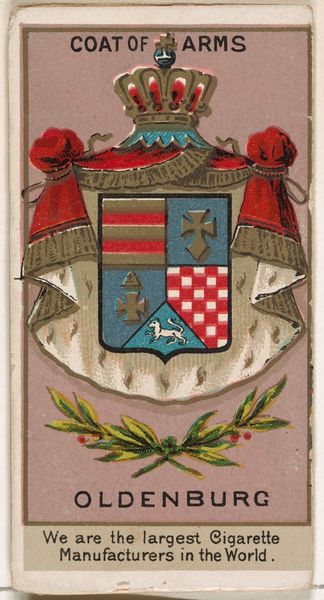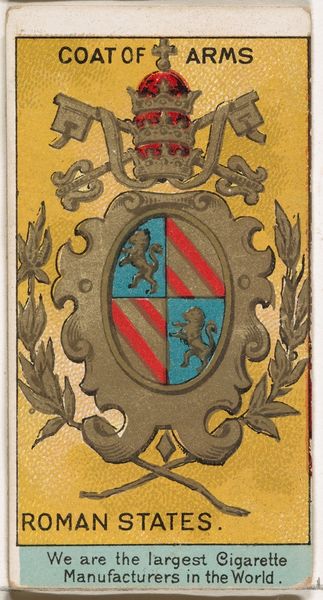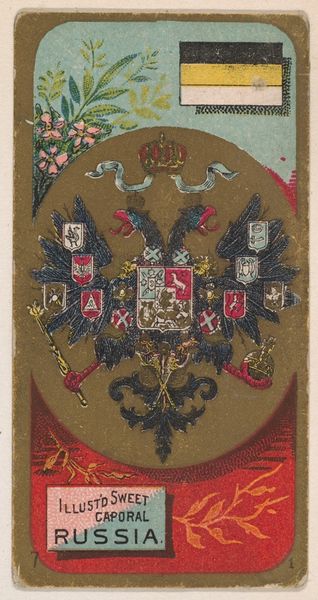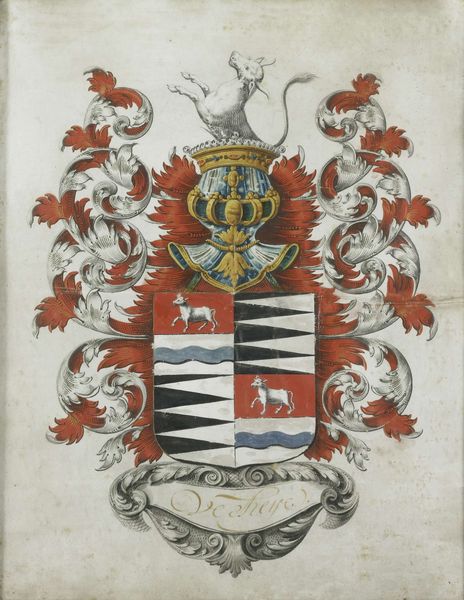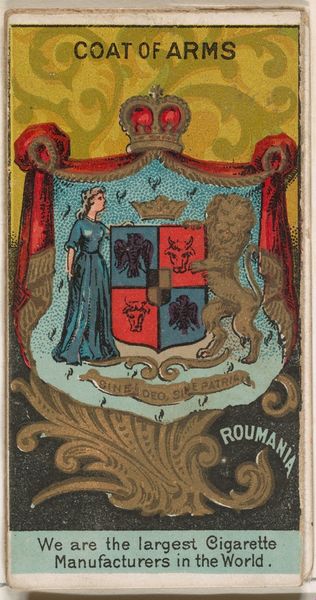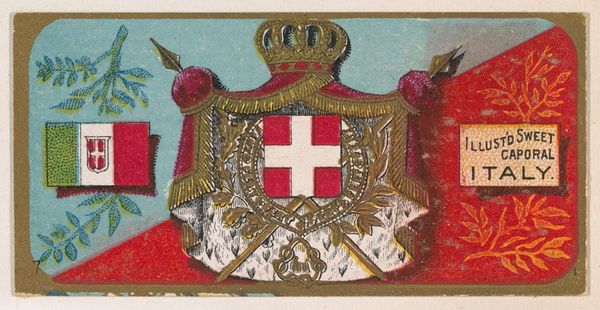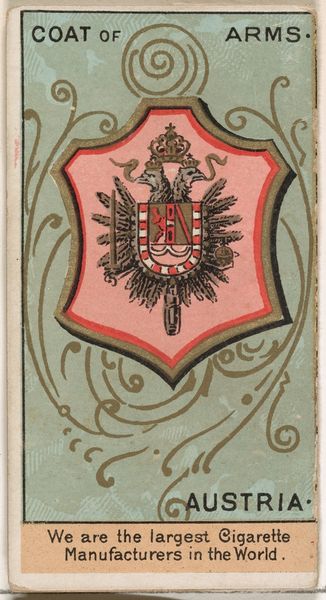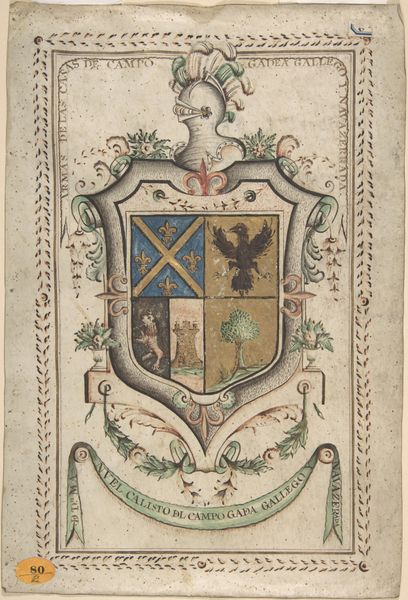
Takore Sahib of Morvi, India, from the Rulers, Flags, and Coats of Arms series (N126-2) issued by W. Duke, Sons & Co. 1888
0:00
0:00
drawing, graphic-art, print
#
portrait
#
drawing
#
graphic-art
# print
#
old engraving style
#
orientalism
#
men
#
history-painting
Dimensions: Sheet: 2 3/4 × 4 1/4 in. (7 × 10.8 cm) Sheet (folded): 2 3/4 × 1 7/16 in. (7 × 3.6 cm)
Copyright: Public Domain
This is a trading card lithograph of Takore Sahib of Morvi, India, dating to the late 19th or early 20th century and produced by W. Duke, Sons & Co. Notice the prominent lions, symbols of courage, nobility, royalty, strength, stateliness and valor. Here, two lions flank a shield, and a third lion is on top. This configuration of lions is not unique to this coat-of-arms; we can find similar usages in other contexts and times, most famously on the Royal Arms of the United Kingdom. Observe how the lion motif has been appropriated by imperial powers throughout history. It is a potent symbol that evokes feelings of power and domination on a subconscious level. The lion has its roots in ancient heraldry and mythology, where it was associated with gods and kings. This imagery, repeated across time, taps into our collective memory. Its continuous reinvention speaks to the human need for symbols of authority.
Comments
No comments
Be the first to comment and join the conversation on the ultimate creative platform.
